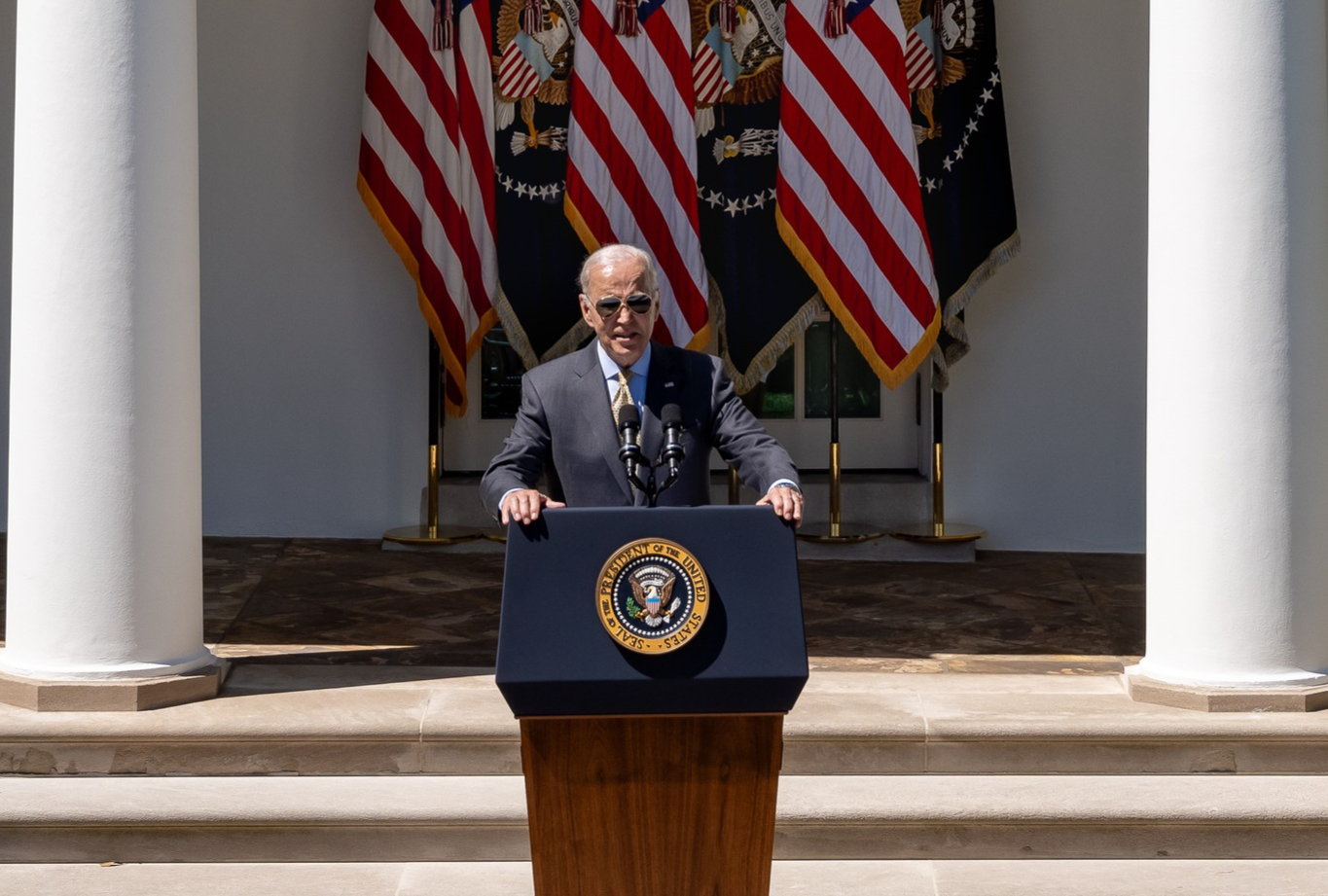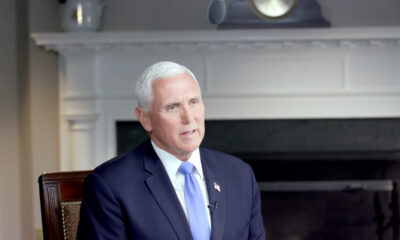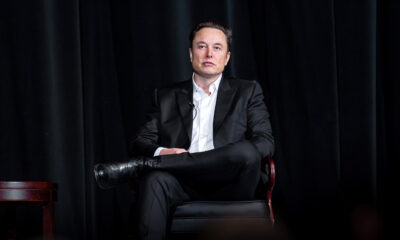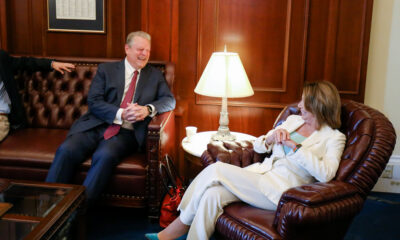Executive
The Trade Wars: How Trump’s and Biden’s Policies Match Up

One of the defining features of former President Trump’s 2016 presidential campaign was his – at least at the time – unorthodox opinions on trade. With the notable exception of Bernie Sanders, the other candidates parroted the longstanding bipartisan consensus on free trade. Trump promoted protectionist policies and tariffs.
Trump defends protectionism
“We can’t continue to allow China to rape our country, and that’s what they’re doing. It’s the greatest theft in the history of the world,” Trump said at a 2016 campaign rally in Fort Wayne, Indiana. In his remarks on the campaign trail, you could hear echoes of his interviews from the 1980s, where he aired his frustration with how the United States handled trade, specifically regarding Japan and the Middle East. “I think a lot of people are tired of watching other countries ripping of the United States” he said. “This is a great country. [Other nations] laugh at us behind our back, they laugh at us because of our own stupidity.”
Now his protectionist views have become mainstream. President Biden recently imposed a fresh set of tariffs on China, including 25% on steel, aluminum, batteries, ship-to-shore cranes, and some medical products, 50% on semiconductors and solar cells, and 100% on electric vehicles.
Before Trump came along, the prevailing wisdom on trade was that free trade and low-to-no tariffs was the best policy to bolster the global economy, including that of the United States. The North American Free Trade Agreement was first envisioned by Ronald Reagan, introduced by George H.W. Bush, and signed into law by Bill Clinton. Ross Perot objected vociferously to NAFTA, but he finished third in 1992 and 1996, and the issue was settled – or so it seemed, based on the presidents who followed Clinton.
The old consensus for free trade
Reading from George W. Bush’s trade representative Robert Zoellick’s 2001 trade agenda, the primary focus was building “a new consensus to promote open markets for trade in the decades to come.” Barack Obama’s 2009 agenda focused slightly more on workers’ rights and the environment, but still prioritized free trade: “Free and fair trade with a proper regard for social and environmental goals and appropriate political accountability will be a powerful contributor to the national and global well-being.”
Departing from the previous mantra, however, both Donald Trump and Joe Biden have made the goal of their trade policies increased domestic production and jobs for working-class Americans. Trump trade representative Robert Lighthizer highlighted this in 2017, saying the focus of their trade policy would be to help everyday people: “By expanding export market access through negotiating good trade deals and enforcing U.S. trade laws, we can raise wages and help level the playing field for American workers, farmers, ranchers, and job-creators.”
The Biden administration has carried a similar tune. In line with the working-class appeals of the “Build Back Better” approach to growing the economy, United States trade representative Katherine Tai said at the start of her tenure she would pursue “a worker-centered trade policy.”
Differences in Trade Policy
Although Trump and Biden largely agree on the objectives of trade policy, their specific policies differ. The first difference is the Biden administration’s focus on equity and environmental issues. Unlike Trump’s 2017 agenda, which exclusively prioritized U.S. strength, the U.S. economy, and protecting U.S. sovereignty, Biden’s also included the pillar of “building sustainable infrastructure and a clean energy future.”
Although there haven’t been any sweeping regulations that enforce this pillar, this has come into play with policies such as “green public procurement,” which outlined “best practices” to promote “sustainable and green solutions.” Some examples they suggested included “building buildings for net-zero emissions and increasing water and energy efficiency” and “pilot programs for carbon pollution-free electricity.”
The other primary difference between the two presidents’ policies on trade is the extent and particulars of their tariffs. Former president of the National Foreign Trade Council William Reinsch told RealClearPolitics the difference between the two is that Trump is “using an ax and Biden’s using a scalpel.”
Trump and Biden: different kinds of tariffs
Specifically, he was referring to Trump’s sweeping 2018 and 2019 tariffs on China, which affected $380 billion worth of goods. In addition to these tariffs, Trump has floated the idea of a 10% tariff on all imports and a 60% tariff on all Chinese goods if he is elected for a second term. Andrew Hale, the Heritage Foundation’s senior policy analyst in trade policy, told RCP that he thinks these 10% tariffs on all goods are just “election trail bravado that will be dialed back if he returns to the White House,” since others, namely Lighthizer, have not indicated support for tariffs on all goods.
The Biden administration has used a more focused approach, with recently announced tariffs affecting only $18 billion worth of Chinese imports. The press release announcing the tariffs said they were put on specific goods because “China’s unfair trade practices concerning technology transfer, intellectual property, and innovation are threatening American businesses and workers.”
This policy differs from Trump’s tariffs on most Chinese exports, focusing instead on specific goods made using unfair trade practices. This goods-based approach, former lead economist in the Office of Tax Policy under the Biden administration Kimberly Clausing told RCP, is “much more narrowly targeted” than Trump’s trade policy, which she characterized as “protectionism without any restraint.”
Effects of Policies
Clausing also questioned the degree to which Trump’s tariffs helped U.S. workers. Although the unemployment rate in the manufacturing industry went down marginally, from 4.2% in January 2017 to 3.4% in January 2020, the U.S. trade deficit increased from around $516 billion in 2017 to $559 billion in 2019. The tariffs did coincide with a small decrease in the trade deficit with China, falling from around $375 billion in 2017 to $342 billion in 2019, but by 2022 it had risen again to $382 billion, even though Biden did not remove most of the Trump tariffs.
Experts say the tariffs might not have had the intended long-term effects due to a variety of factors. Clausing pointed to retaliatory tariffs put in place by China, such as their 2018 25% tariff on $50 billion worth of goods, which decreased U.S. exports to China. Therefore, although imports from China decreased, exports to China also decreased, leaving the trade balance with China largely unchanged. William Reinsch also told RCP that China employed tactics to avoid the tariffs, such as sending steel to Vietnam or Korea, and then “substantially transforming” the steel into wire, for example, so it wouldn’t be subject to the U.S. tariff on Chinese steel.
Are some tariffs counterproductive?
Biden’s recent tariffs haven’t escaped criticism either. Scott Lincicome, vice president of general economics at the libertarian-leaning Cato Institute, criticized the tariffs on environmental goods such as EVs, saying that the increased prices of these goods “deters the administration’s own environmental objectives.” Lincicome also critiqued the idea of tariffs more generally, saying that the industries “protected” by tariffs don’t use the added profits from higher prices to become “hyper innovative and efficient” but just tend to “pocket the win, and then when tariffs or subsidies are going to disappear, go back to Washington and lobby for more of them.”
This article was originally published by RealClearPolitics and made available via RealClearWire.
Jonathan Draeger is a National Political Reporter for RealClearPolitics.
-

 Civilization4 days ago
Civilization4 days agoDC Pipe Bomb Arrest Raises Questions About Christopher’s Wray’s FBI
-

 Civilization5 days ago
Civilization5 days agoThe Legal Logic Behind U.S. Operations Against Narco-Terrorist Networks
-

 Executive5 days ago
Executive5 days agoNewsom’s ‘National Model’ for Homeless Wracked by Fraud
-

 Executive2 days ago
Executive2 days agoWaste of the Day: Obamacare Failed Test, Approved Fraudulent Subsidies
-

 Executive4 days ago
Executive4 days agoWhen You’re in a Hole, Stop Digging
-

 Education3 days ago
Education3 days agoWaste of the Day: Taxpayers Subsidize Football Coach Severance
-

 Civilization3 days ago
Civilization3 days agoPence Calls on Trump To Fire RFK Jr Over Abortion Drug
-

 Civilization3 days ago
Civilization3 days agoRight-Wing Antisemitism, Liberalism, and Leo Strauss














